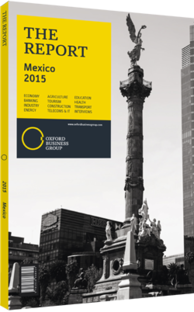José Luis Castro, CEO, CTS (Corporate Travel Services): Interview

Interview: José Luis Castro
What is the size of the local travel agency industry?
JOSE LUIS CASTRO: It is very complicated to measure the size of the industry, as the launch of low-cost carriers (LCCs) has affected the measurement. In the past, we had a ranking based on the bank settlement plan (BSP), but since LCCs also withdraw from the BSP we can only measure the size of the air industry by omitting LCCs, which gives us an estimate of $3bn – an amount that in our view is very conservative. Leisure travel will increase 10-fold in the next two years, according to the World Tourism Organisation. If Mexico can implement the right policies, we could attract a substantial amount of this growth. Mexico’s expansion is dependent on the development of the US economy, and since it has shown steady growth in recent months, it seems like the Mexican tourism industry could also grow significantly.
What are the most pronounced changes in travel trends for Latin America?
CASTRO: Recently we had a marked growth in travel to and from South America. Most companies that used to have centralised operations in the US have decentralised into smaller, regional offices, and many of these offices are in Mexico City. This has made airlines such as LATAM Airlines Group, Avianca and Aeroméxico increase their flights to cities like Bogotá, Medellín, São Paulo, Rio and Lima. The trend that we were seeing was not only increasing in terms of business travel, but also leisure. Today, we see a drastic change in that trend. We see an increase in business travellers to cities such as New York, Houston and Las Vegas. The implementation of “Global Entry” between Mexico and the US is increasing the number of trips between the two nations. The market has never been as sensitive to prices as now, and this behaviour is impacting the way airlines price.
How would you describe Mexico’s meetings, incentives, conferences and exhibitions (MICE) segment?
CASTRO: The MICE industry in Mexico is growing at an impressive rate, which is almost entirely dependent on the strength of the US economy. When the US market is expanding, we see a drastic uptake in the number of meetings and events in Mexico. This increase can be seen even when the US economy gains half a point.
Previously, the only cities in Mexico that hosted such events were Los Cabos and Cancún, but in recent years we have seen a boom in other centres, such as Mexico City. This is great for the country, especially since MICE trips usually include leisure travel, and as Mexico has the resources to satisfy both segments we expect more growth. If we compare the number of international visitors into the country from last year to the previous one, we were close to an impressive 19% increase. About 10 years ago there were 10 companies working in the MICE arena, and now the number is probably closer to 100. The sector has become specialised and competitive as it has matured.
What challenges does the MICE industry face?
CASTRO: The Mexico City airport is currently saturated and hindering the MICE industry, however there is an ongoing project to build a brand new airport in the city. Its capacity and reach will attract more business conferences, large meetings and congresses, especially because it is primed to become a travel hub for Latin America, with a projected 120m travellers per year.
The second aspect, which is already well developed in comparison to other countries in the region, is transport and telecoms. More highways connecting Mexico’s business centres and better-developed telecoms infrastructure would go a long way towards fostering the MICE industry. Lastly, there is a perception in international markets about insecurity and violence within the country. The Mexican authorities are working hard to enforce the law and when we refer to the issue as “perception”, it is because Mexico is a very large nation, with almost 2500 municipalities. From that number, it is important to put into context that 90% of the criminal activity is concentrated in 80 of those regions, which amounts to not even 5% of Mexican territory.
You have reached the limit of premium articles you can view for free.
Choose from the options below to purchase print or digital editions of our Reports. You can also purchase a website subscription giving you unlimited access to all of our Reports online for 12 months.
If you have already purchased this Report or have a website subscription, please login to continue.

